Concert Review | Continuing a New Chapter in Sino-Japanese Exchange – Japan's Senzoku Gakuen College of Music Modern Hogaku Chamber Ensemble in Beijing
On the evening of May 17th at 19:30, the Beijing Modern Music Festival's "Japanese Modern Hogaku Concert" was held at the Recital Hall of the Central Conservatory of Music.
The Senzoku Gakuen College of Music Modern Hogaku Chamber Ensemble, composed of over a dozen members, has a history of about twenty years and is dedicated to exploring contemporary expressions of traditional instruments by integrating Eastern and Western musical traditions. Present at the venue were performers of shakuhachi, koto, and Tsugaru shamisen, along with a cellist and a conductor who is also a composer. Two specially invited Chinese traditional musicians joined the ensemble to present a musical feast integrating Chinese and Japanese elements, as well as Eastern and Western influences.
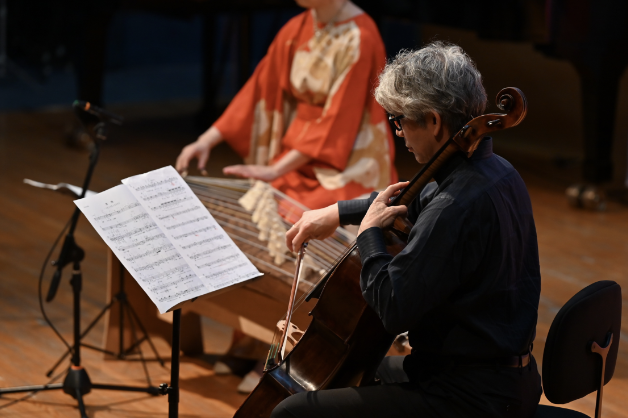
Also noteworthy were the ten pieces performed, five by Japanese composers, four by Chinese composers, and one Japanese folk song. This program combination was particularly ingenious, reflecting the designer's intention to showcase the musical characteristics of both China and Japan.
The concert opened with "Cool Wind, Autumn Moon," composed by young composer Yu Pengfei. Before the performance, Yu Pengfei took the stage to share the creative background and his personal journey in composing the piece. He mentioned that the famous Qing Dynasty Cantonese song "Autumn Hate on a Journey" was his inspiration, but a major challenge was how to make the modified erhu and sheng interpret the unique pitches of Nanyin music.
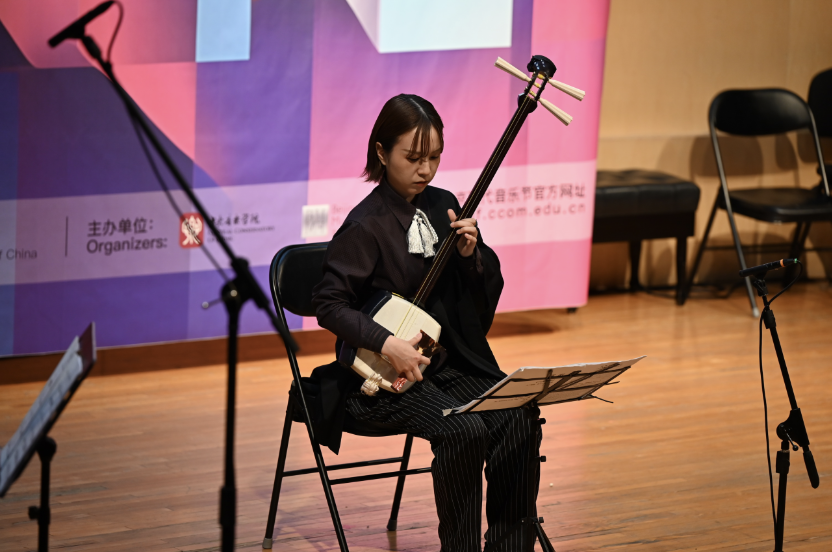
Throughout the piece, the combination of these two traditional Chinese instruments was truly exquisite, possessing characteristics of both Guangdong music's "soft bow combination" and the Jiangnan region's "silk and bamboo ensemble." The piece was roughly divided into six sections, with variations in tempo and dynamics being a major highlight, making the musical imagery of each part distinct and unique. At the same time, the entire work featured alternating dialogues between the erhu and sheng, their call-and-response exchanges conveying a tapestry of melancholy and longing.
The second piece in the first half of the concert was "Mujū Shinkyoku" (Unfettered Mind Melody), composed by Japanese shakuhachi player Jin Nyodo, which the composer himself referred to as a "living piece." The title originates from a phrase in the Diamond Sutra: "One should develop a mind that is nowhere attached," expressing the composer's philosophy that "music is naturally born from the universe through people." Jin Nyodo's grandson, Jin Rei, embodied this philosophy through his performance. Before playing, he slowly brought out the shakuhachi from behind him in an ethereal manner, a movement that quickly captured the audience's attention. Subsequently, with superb breath control, he consistently maintained a stable musical mood. Even repetitions of the same musical material, under his interpretation, created an atmosphere of unrestrained and detachment. If one were to describe Jin Rei's performance in a single phrase, "following one's heart's desire without overstepping the bounds" would be most fitting.
Next was the classical instrumental piece "Midare" (Disorder), composed by the blind koto master Yatsuhashi Kengyō from Japan's Edo period. This piece belongs to the "danmono" genre, a type of instrumental music for koto or zheng, where each section typically has 52 beats, and the tempo gradually increases with each progressing section. It is called "Midare" because the number of beats in each section is irregular, and the rhythm changes from time to time.
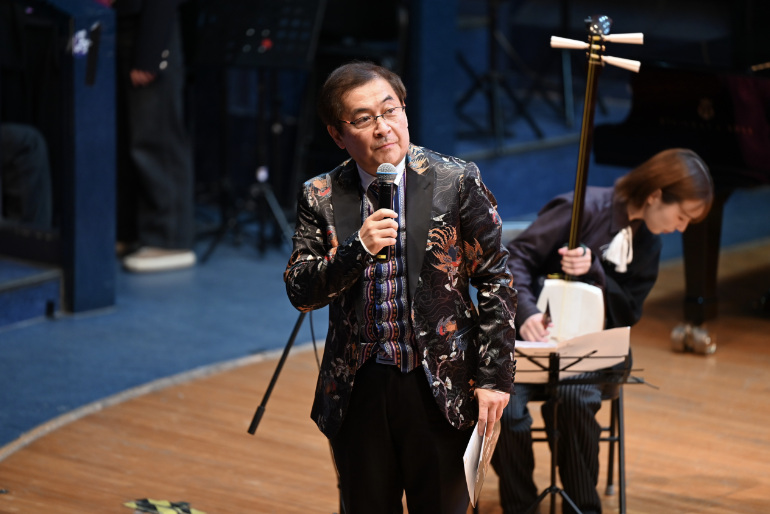
Under the interpretation of Japanese koto player Sachiko Yoshihara, this sense of disorder was by no means chaotic. She organized the musical notes using rhythmic combinations that did not rigidly adhere to traditional "danmono," resulting in a piece that was orderly within its disorder and quite beautiful. The work has two main parts: the first part is calm and soothing, while the second part is passionate and lively. The coda is relatively short, reprising the thematic material of the first part. Melodies characteristic of the Japanese Ryukyu scale were showcased through Sachiko Yoshihara's combined pressing and plucking techniques, allowing the audience to appreciate the distinct charm of ancient Japanese music compared to ancient Chinese music.
"Tsugaru Folk Song," one of the "Five Great Folk Songs" from the Tsugaru region of Aomori Prefecture, Japan, was the only anonymous piece in the entire concert, featuring the traditional Japanese instrument, the shamisen. Facing improvisation, performer Misato Someya was already thoroughly familiar and at ease, igniting the audience's enthusiasm from the outset with rapid, attention-grabbing strumming.
The entire piece had a very strong rhythmic feel. Although not lengthy, the alternation of various techniques such as strumming, plucking, picking, and tremolo was vividly demonstrated in her performance. Similar to the traditional Chinese plucked instrument, the pipa, the shamisen's sound can also be described as "the thick strings clattered like a sudden shower, the fine strings hummed like a private whisper," but with a more granular texture. Perhaps captivated by Misato Someya's exquisite playing skills, the atmosphere became increasingly lively, and audience members纷纷 (fēnfēn - one after another) took out their phones, wanting to capture this precious moment.
The final piece of the first half was "Yanchuan" (Oral Tradition) by young composer Liang Nan. As the composer stated when he came on stage before the performance, the fusion of Chinese, Japanese, and Western cultures is the concept the work strives to highlight, reflected in the use of the Japanese koto, sheng, and cello. He also explained the meaning of the title "Yanchuan": on the one hand, the literal meaning of "teaching by word and example," and on the other, an imitation of the dialectal tones of Xi'an, reflecting his intention to use various musical languages to mimic "speaking" and expressing his love for cultural fusion.
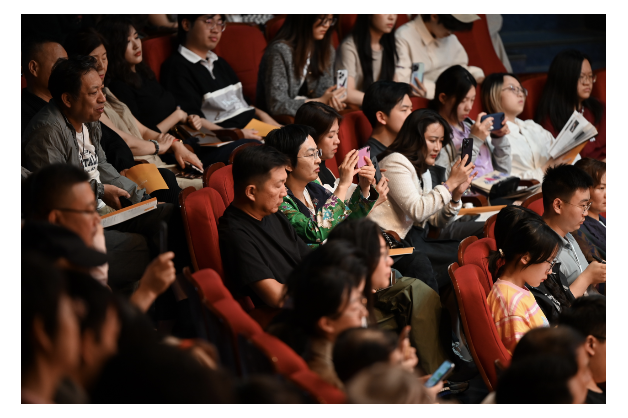
This work not only marked the cello's debut in the concert but also vividly interpreted the "fusion of Eastern and Western musical traditions" philosophy that the Senzoku Gakuen Modern Hogaku Chamber Ensemble has always upheld. The work is roughly divided into five parts. Despite significant emotional fluctuations and stark contrasts in imagery, "imitating the human voice" remained the core characteristic of the sound shaping. For example, in the second part, the cello's rapid tremolo, the sheng's continuous staccato, and the bass koto's swift plucking were like incessant chatter, a most direct interpretation of the "Yanchuan" theme.
After a short intermission, the second half of the concert began with "Bunraku" by Japanese composer Toshiro Mayuzumi. Although a piece with a strong traditional Japanese musical style, the composer used the cello as the solo instrument for the entire work, imitating the sonic characteristics of the Japanese futozao shamisen melody right from the beginning. This was perhaps the composer's practice of his creative philosophy of "the confluence of tradition and avant-garde." Shunsuke Fujimura's interpretation was both brilliant and unique, especially his ability to keep his left-hand pizzicato and right-hand bowing perfectly synchronized and balanced, and to intentionally alternate between the two techniques, endowing the solo cello with the potential to create diverse sonic effects.
Next was "Desert Mirage" by young composer Zheng Yang. This piece shared similarities with "Yanchuan" from the first half; not only were both performed by three instruments originating from China, Japan, and the West, but both also highlighted the passage of time and the vicissitudes of history. As the composer stated during his pre-performance introduction, the work aims to showcase the vastness and magnificence of the desert through these three instruments from different musical cultures, and also hopes to unearth the moving memories and spiritual power hidden within.
The most prominent feature of the work was the clear division of labor and distinct personalities of the three instruments. For instance, when depicting the "frontier desert" scene, the cello played a sustained low note with extremely rapid bowing, rendering the sense of tragic desolation to its fullest; the shamisen simulated the sound of howling winds with rapid strumming and plucking; the sheng's sound was the sharpest and most piercing, like a mournful cry against the backdrop of the other two.
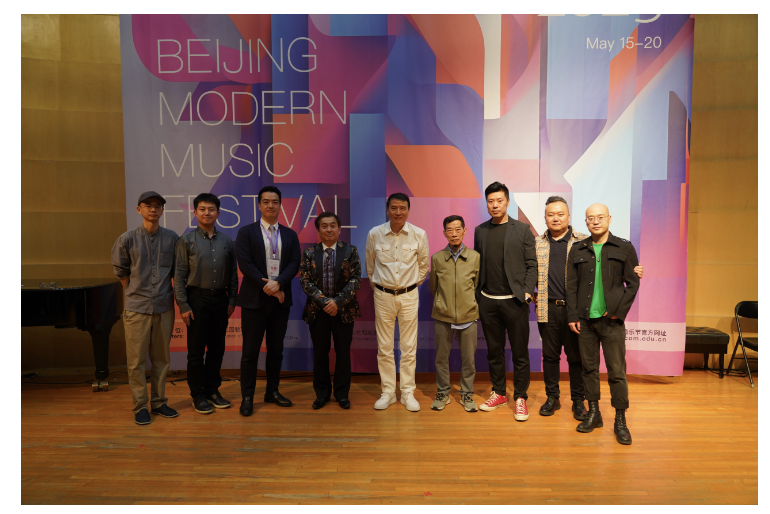
Following this was "Beautiful City III" by Japanese composer Yūko Matsuo. This piece was written shortly after the composer created "PHONOSPHERE I - for Shakuhachi and Orchestra" for the Tokyo Philharmonic Orchestra in 1993. Judging from the title, "city" originally refers to a modern metropolis, but the composer seemed more inclined to define it as a tranquil "ancient capital," constructing a fantastical inner world within it, where music becomes the means to present this imagery. Many unusual sound effects were incorporated into this piece, such as the koto player suddenly plucking the strings during the performance, causing the strings to vibrate rapidly and produce a "whipping" sound effect, creating a stark contrast with the vigorous sound of the shakuhachi, yet organically intertwining. Similar effects included the intentional muting of the koto's fading notes.
"Waning Moon" by young composer Bai Chao continued the instrumentation of the previous "Yanchuan" and "Desert Mirage," bringing Chinese, Japanese, and Western instruments together on stage once again. A distinctive feature of the work was its reinterpretation of the emotion of "joys and sorrows, separations and reunions," inevitably reminding one of the concert's opening piece, "Cool Wind, Autumn Moon." Bai Chao mentioned in his pre-performance introduction that the work was inspired by heartwarming instances of China and Japan showing true friendship in times of adversity over the past few years, highlighting the commonality of human nature. He aimed to vividly interpret this reflection using Su Shi's timeless line from "Prelude to Water Melody," "People have sorrows and joys, separations and reunions; the moon has its dark and bright, waxing and waning," with the "waning moon" as a core image running throughout.
The concert concluded with Yūko Matsuo's "Yuragi no Toki III" (When Swaying III), once again featuring the traditional Japanese instruments shakuhachi, shamisen, and jūshichigen (17-string koto), alongside the Western cello, interpreting the concept of "fusion of Eastern and Western music." This was also the world premiere of the work, with the composer himself present to conduct.
Unlike Matsuo's earlier piece, he took the stage before the performance of this work to share his understanding of the three elements that constitute music—sound, duration, and the human ability to recognize sound as music—in a humorous English address to the audience.
Throughout the piece, the sequential nature of the performance and the repetition of material left the deepest impression on this writer. At the beginning of the piece, the shamisen, bass koto, shakuhachi, and cello successively played the same melody, repeating in this order, reflecting the sequential nature of the performance. In the development section in the middle of the piece, the bass koto, shamisen, and shakuhachi used melodic repetition as thematic material, with the bass koto's plucking sequence remaining consistent, demonstrating the repetition of material.
In an interview with this writer after the concert, Matsuo explained the creative philosophy behind this work. He believes that "modern music" needs to be written for a wider audience and should not be merely a product of the composer's solitary appreciation. "Yuragi no Toki III" is his embodiment of this philosophy.
Looking at the entire concert, the term "modern" is no longer narrow, not limited to "avant-garde" and "pioneering," but rather reflects the modern concept of multicultural fusion and inclusiveness. More importantly, this concert brought together the strengths of Chinese and Japanese music and embraced the elegance of Eastern and Western cultures, organically integrating the two, and continuing to write a new chapter of friendly cultural exchange between China and Japan in the new era through creation and performance.
Executive Director|Guo Hai'ou
Executive Assistants|Zhang Shuhao, Yin Nan
Manuscript Writing|Feng Binghua
Photography|Zhang Yaxuan
